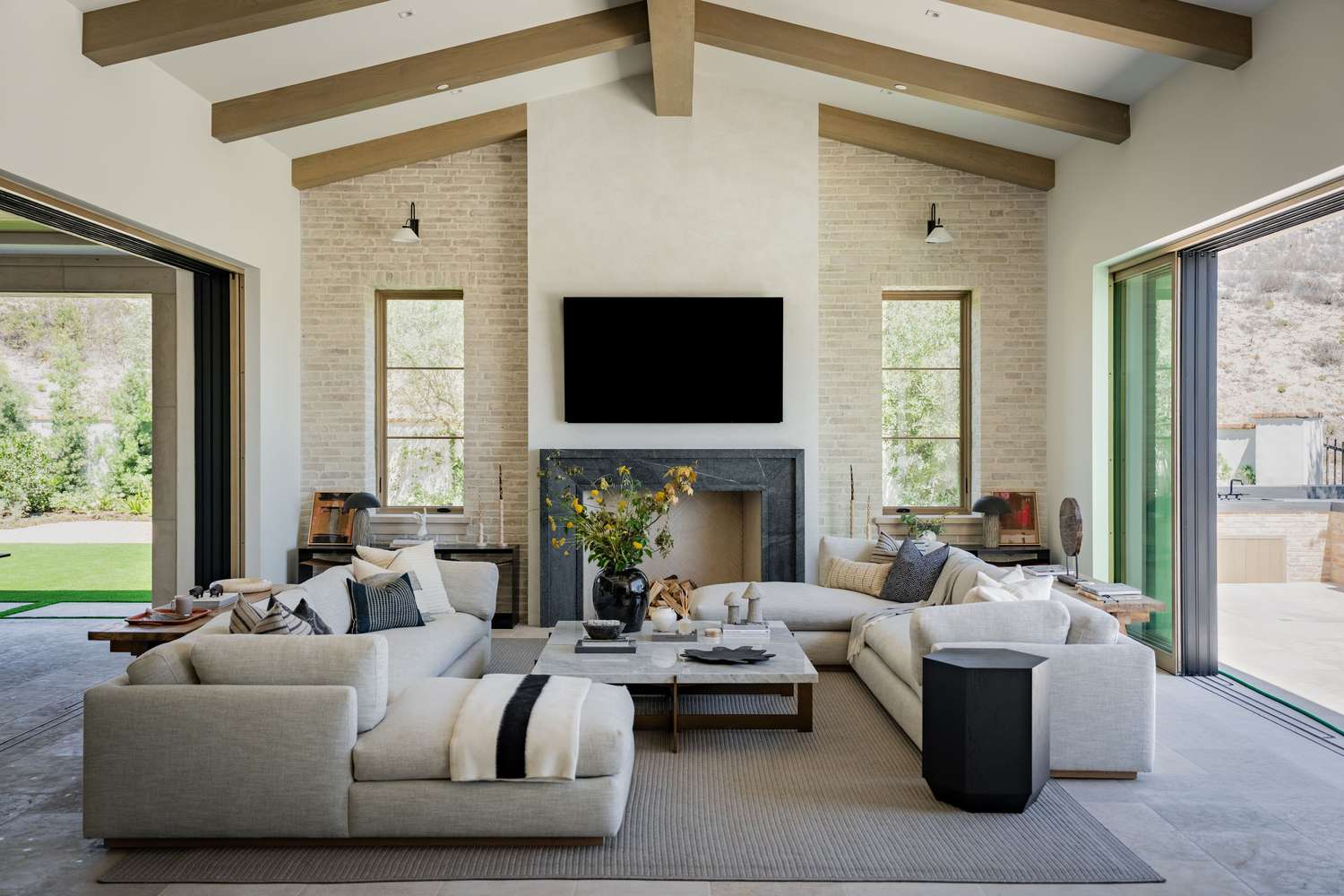
Living rooms serve as central gathering spaces in homes, where families and friends come together to relax, entertain, and socialize. The size of a living room plays a crucial role in determining its functionality, comfort, and aesthetic appeal. In this article, we explore the significance of living room size, factors influencing it, and provide an overview of average dimensions to help homeowners better understand and optimize their living spaces.
Factors Influencing Living Room Size
Architectural Design and Layout
The size of a living room is often influenced by the architectural design and layout of the home. Factors such as the overall square footage, floor plan configuration, and the placement of walls and structural elements can dictate the available space for the living area. Homes with open floor plans may feature larger living rooms that seamlessly flow into adjoining spaces, while traditional layouts may have separate, designated living areas with defined dimensions.
Functional Requirements
The intended use and functional requirements of the living room also play a significant role in determining its size. For example, a family room designed for casual lounging and entertainment may require more square footage than a formal sitting room used primarily for receiving guests. Considerations such as seating capacity, entertainment systems, and storage needs influence the size and layout of the living space to accommodate various activities and lifestyle preferences.
Cultural and Regional Variations
Cultural norms and regional preferences can also influence the size of living rooms in residential architecture. In some cultures, spacious living areas are valued for hosting large gatherings and social events, leading to larger average room dimensions. Conversely, in densely populated urban areas or regions with limited space, living rooms may be more compact to maximize the use of available square footage. Understanding these cultural and regional variations can provide insight into the diversity of living room sizes worldwide.
Typical Dimensions of Living Rooms
Width and Length Measurements
The average dimensions of a living room typically range between 12 to 18 feet in width and 16 to 20 feet in length, although variations occur depending on architectural design and individual preferences. These dimensions provide ample space for seating arrangements, furniture placement, and traffic flow while maintaining a comfortable and inviting atmosphere. However, larger or smaller living rooms are not uncommon, and custom designs may deviate from these averages to suit specific needs and preferences.
Ceiling Height Considerations
In addition to width and length measurements, ceiling height is an essential factor to consider when assessing living room size. Standard ceiling heights range from 8 to 10 feet, providing a sense of spaciousness and airiness to the room. Taller ceilings can visually expand the space and accommodate larger windows or architectural features, while lower ceilings create a cozy, intimate ambiance. Ceiling height influences lighting options, furniture proportions, and overall design aesthetics in the living room.
Furniture Arrangement Guidelines
The layout and arrangement of furniture play a crucial role in maximizing the functionality and visual appeal of the living room. In average-sized living rooms, consider placing seating arrangements such as sofas, armchairs, and coffee tables to facilitate conversation and social interaction. Allow for adequate circulation space around furniture pieces to ensure comfort and accessibility. Experiment with different furniture layouts to find the optimal arrangement that suits the size and shape of the room.
Variations in Living Room Sizes
Small Living Rooms
Small living rooms present unique design challenges due to limited space constraints. To optimize functionality in a smaller area, focus on maximizing vertical space with tall bookcases or wall-mounted storage solutions. Choose multifunctional furniture pieces such as sleeper sofas or nesting tables that can adapt to different needs. Lighter colors and minimalist decor help create a sense of openness and brightness in compact living rooms, while strategic lighting design enhances the perception of space.
Large Living Rooms
Large living rooms offer versatility and flexibility in design and layout. To prevent the space from feeling cavernous, divide the room into distinct zones for different activities such as lounging, dining, or entertainment. Arrange furniture in groupings to create intimate conversation areas and focal points within the room. Experiment with oversized furniture pieces, statement lighting fixtures, and bold decor elements to add personality and visual interest to the expansive space.
Open Concept Living Spaces
Open concept living spaces combine the living room, dining area, and kitchen into one cohesive area, blurring the boundaries between functional zones. These multi-purpose spaces are characterized by expansive layouts and abundant natural light, creating a sense of connectivity and flow throughout the home. To define separate areas within an open concept living space, use area rugs, furniture placement, and lighting to delineate zones for different activities while maintaining visual continuity and coherence.
Optimizing Living Room Space
Design Strategies for Small Rooms
In small living rooms, maximizing space efficiency is paramount. Choose furniture with slim profiles and multifunctional capabilities to make the most of limited square footage. Consider built-in storage solutions or wall-mounted shelving to minimize clutter and free up floor space. Selecting light colors for walls, flooring, and furniture upholstery helps create a sense of openness and brightness, while mirrors and reflective surfaces enhance the perception of space.
Utilizing Space in Large Rooms
In large living rooms, the key is to strike a balance between functionality and aesthetics. Create distinct conversation areas and focal points to anchor the space and prevent it from feeling empty or overwhelming. Experiment with oversized furniture pieces, statement artwork, and decorative accents to fill the room without overcrowding it. Incorporate rugs, curtains, and textiles to add warmth and texture, breaking up the expanse of the room and creating visual interest.
Creating Balance in Open Concept Spaces
In open concept living spaces, maintaining balance and harmony between different functional zones is essential. Use furniture placement, area rugs, and lighting to define separate areas for living, dining, and cooking while ensuring a cohesive overall aesthetic. Choose cohesive color palettes and design motifs to unify the space and create a sense of continuity throughout. Incorporate flexible furniture arrangements and modular pieces that can adapt to evolving needs and activities in the multi-purpose area.
In conclusion, the size of the average living space varies depending on architectural design, functional requirements, and cultural influences. Understanding the factors influencing living room size, typical dimensions, and variations in room sizes allows homeowners to optimize their living spaces for comfort, functionality, and aesthetic appeal. Whether dealing with small, large, or open concept living areas, implementing strategic design strategies and furniture arrangements helps maximize space efficiency and create inviting and well-balanced environments for living and socializing.


